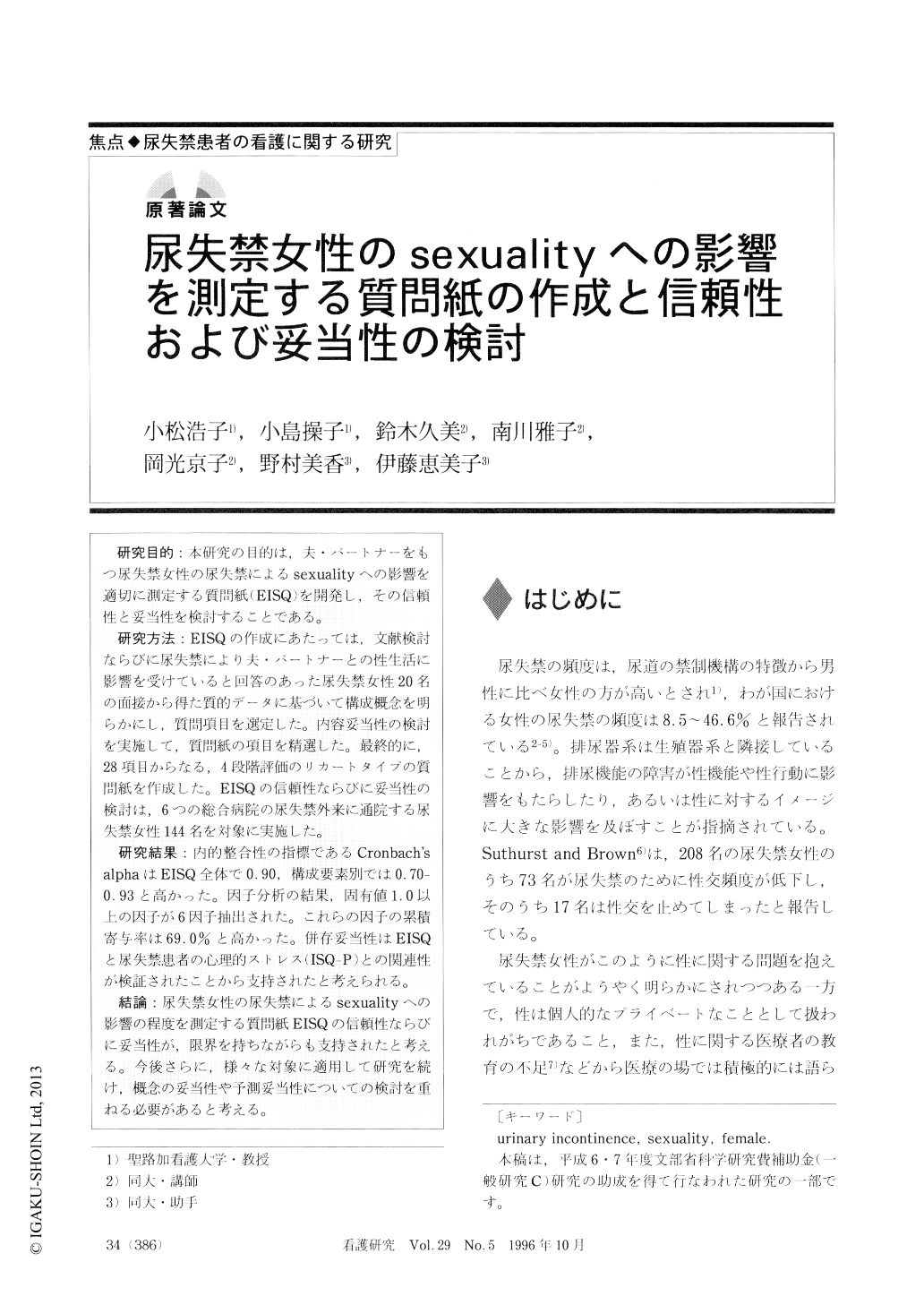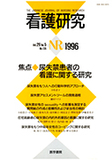Japanese
English
- 有料閲覧
- Abstract 文献概要
- 1ページ目 Look Inside
研究目的:本研究の目的は,夫・パートナーをもつ尿失禁女性の尿失禁によるsexualityへの影響を適切に測定する質問紙(EISQ)を開発し,その信頼性と妥当性を検討することである。
研究方法:EISQの作成にあたっては,文献検討ならびに尿失禁により夫・パートナーとの性生活に影響を受けていると回答のあった尿失禁女性20名の面接から得た質的データに基づいて構成概念を明らかにし,質問項目を選定した。内容妥当性の検討を実施して,質問紙の項目を精選した。最終的に,28項目からなる,4段階評価のリカートタイプの質問紙を作成した。EISQの信頼性ならびに妥当性の検討は,6つの総合病院の尿失禁外来に通院する尿失禁女性144名を対象に実施した。
Objectives. This study developed a measure of the degree of the effect of urinary incontinence on female sexuality and tested the reliability and validity of the developed measure, Effect of Urinary Incontinence on Sexuality Questionnair (EISQ).
Methods. The EISQ was developed from a thorough literature review and interviews of 20 individuals with urinary incontinence who said their incontinence had affected their dyadic relationship. These items were submitted to an analysis of content validity. This work resulted in a 28 items questionnaire that used a 4-point Likert type response scale.
The reliability and validity of the EISQ was tested with 144 women with incontinence who visitedout-patient clinic in six hospitals.
Results. Cronbach's alpha as the index of internal consistency was high.
The EISQ total was 0.90 and alpha ranged from 0.70 to 0.93 for the six subscales. Six factors each with an eigenvalue greater-than-or-equal-to-one were extracted from a principal components factors analysis with varimax rotation. The cumulative percentage of variance explained by this solution was 69.0%. Concurrent validity analyses confirmed our predictions that the EISQ scores were related to Patient Incontinence Stress (ISQ-P)scores.
Conclusion. The EISQ proved to be reliable and valid as a self administered measure for assessing the effect of urinary incontinence on female sexuality. The EISQ has demonstrated sufficient psychometric properties to warrant continued study of other samples and to explore the relationship between EISQ and other outcome variables.

Copyright © 1996, Igaku-Shoin Ltd. All rights reserved.


